These sites are on Aboriginal Country. I sincerely acknowledge the respective Traditional Custodians of these lands and their connection to land, sea and community. I pay my respects to their Elders past and present, and thank them for sharing these places with us.
Even after more than 20 years in this sunburnt country, I’m still woefully ignorant about its Indigenous history, culture, social justice, governance, native title, you name it…
Most of that ignorance falls on my shoulders simply.
And while I keep reading books and articles in newspapers, visit Indigenous sites, and have frequent chats with a far more knowledgable friend than I am, there’s still so much more to know about this topic.
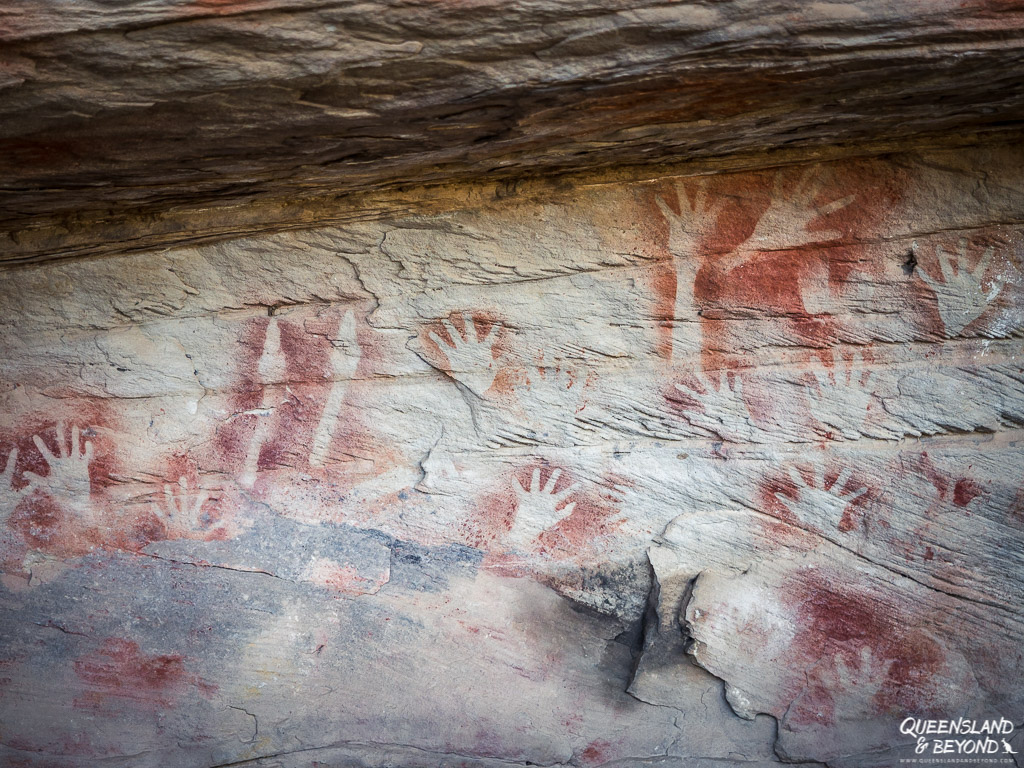
Indigenous affairs is such a complex and deeply polarising topic in Australia, and I feel by no means qualified to speak on the topic.
But growing up with the collective burden and guilt of World War II and the Holocaust, I cannot help but ponder how mainstream Australia deals with its past compared to Germany.
ABORIGINAL ROCK ART IN QUEENSLAND: A SELECTION OF SITES
In so many ways, Queensland is different from the rest of Australia.
But one thing I’ve really appreciated since moving north more than a decade ago is the opportunity to learn about and experience Aboriginal rock art. It is something truly magnificent.
In case you’re wondering about ‘Indigenous’ vs. ‘Aboriginal’: Indigenous includes both Aboriginal and Torres Strait Islander people.

Indigenous rock art in Australia includes paintings, drawings, hand stencils, engravings, and similar. You can usually find these on rock walls, in caves, on boulders and platforms. Researchers estimate that there are at least 100,000 rock art sites across Australia.
Every rock art site we’ve seen so far has been fascinating. Some people dismiss it as mere childish hand prints but I’ve found each site to be special, reflecting the spirit and profound connection to Country of Australia’s Indigenous population.
My list of spots is by no means comprehensive, and admittedly still a bit small. But it’ll help you get started if you want to learn more about Aboriginal rock art in Queensland.
1. CANIA GORGE NATIONAL PARK
Whilst Cania Gorge didn’t do much for us in terms of spectacular scenery, the Aboriginal rock art is a little more impressive.
Although Queensland Parks & Wildlife Service maintain that none of the Aboriginal rock art sites at Cania Gorge are accessible, you can find a few ochre-coloured hand prints.
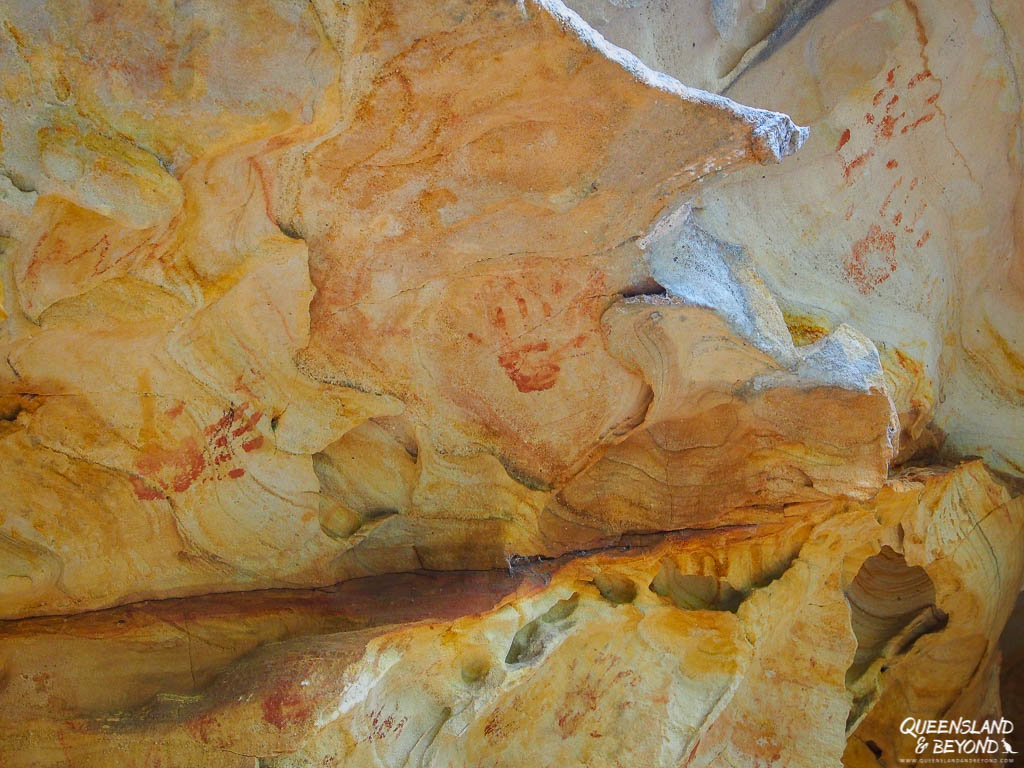

And then there’s also Big Foot, a large print of a 4-toed foot.
“Big Foot” may not be considered Aboriginal rock art but it appears to be a special, if not sacred, site (thanks, Ian, for the link!). A couple of academic papers mention this spot as an excavation site for cultural artefacts.
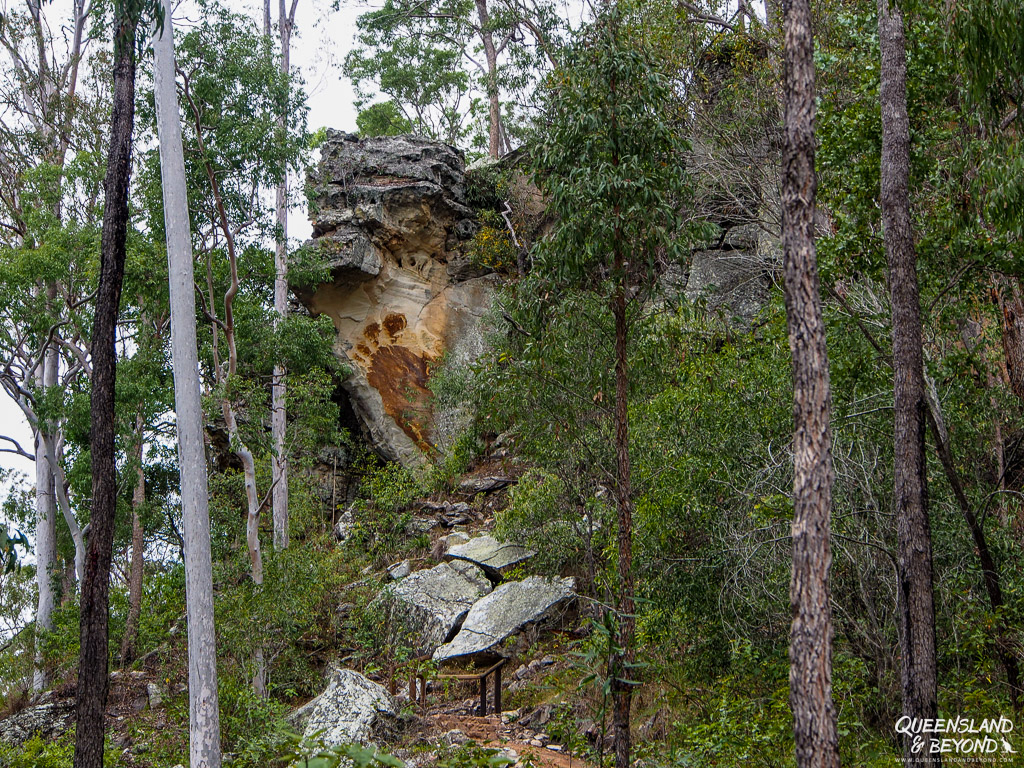
2. CARNARVON GORGE, CARNARVON NATIONAL PARK
It’s a fair trek out to Carnarvon Gorge but the national park offers absolutely magnificent examples of Aboriginal rock art in Australia.
Most of the sites are inaccessible to the public but there are two specific sites, the Art Gallery and Cathedral Cave, where you can admire over 2,000 free-hand paintings, ochre-coloured stencils and engravings.
In fact, the entire gorge reflects the Bidjara and Karingbal peoples’ deep connection to this land.
The dreaming says that the rainbow serpent Mundagurra created Carnarvon Gorge as he travelled through the creek system, coming in and out of the water, and carving the sandstone as he travelled.
QUEENSLAND PARKS & WILDLIFE SERVICE

You can find paintings and stencils of tools and weapons (boomerangs, spears), hand prints, animal prints (kangaroo, emu), and nets among others.
The freehand nets tell us that this is also a burial site – some of our ancestors were laid to rest here. Sometime in the past the bodies of our people were removed without consent.
Interpretative sign at the Art Gallery, Carnarvon Gorge

Here are a few more examples of Aboriginal rock art from the Art Gallery and Cathedral Cave.


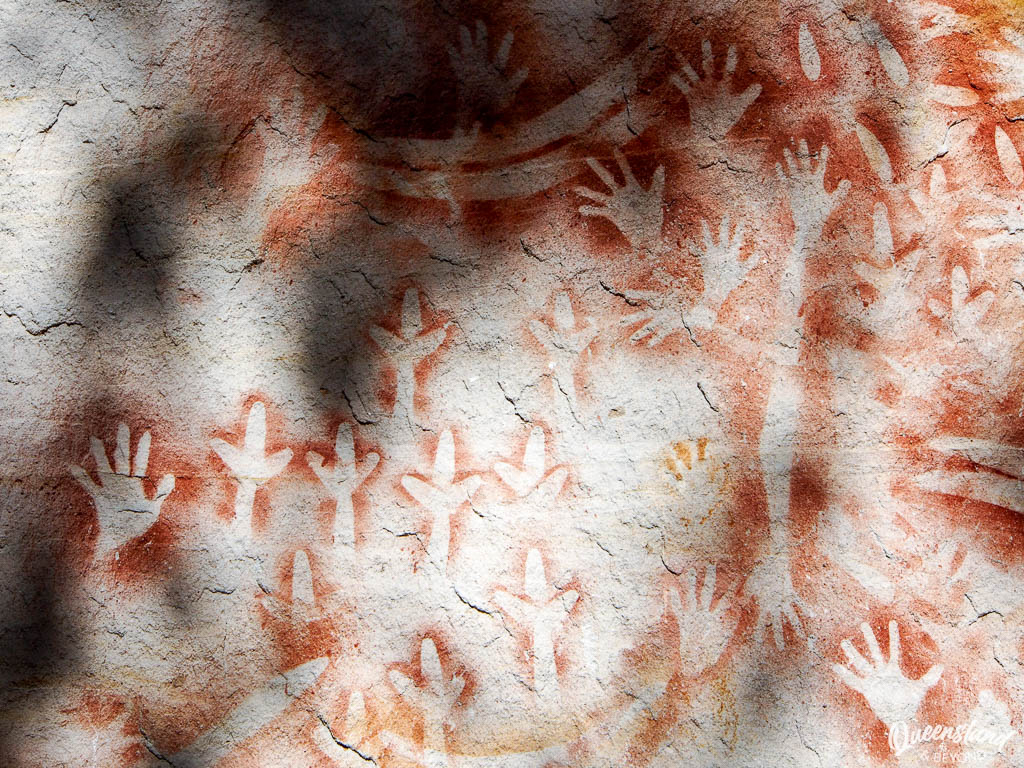
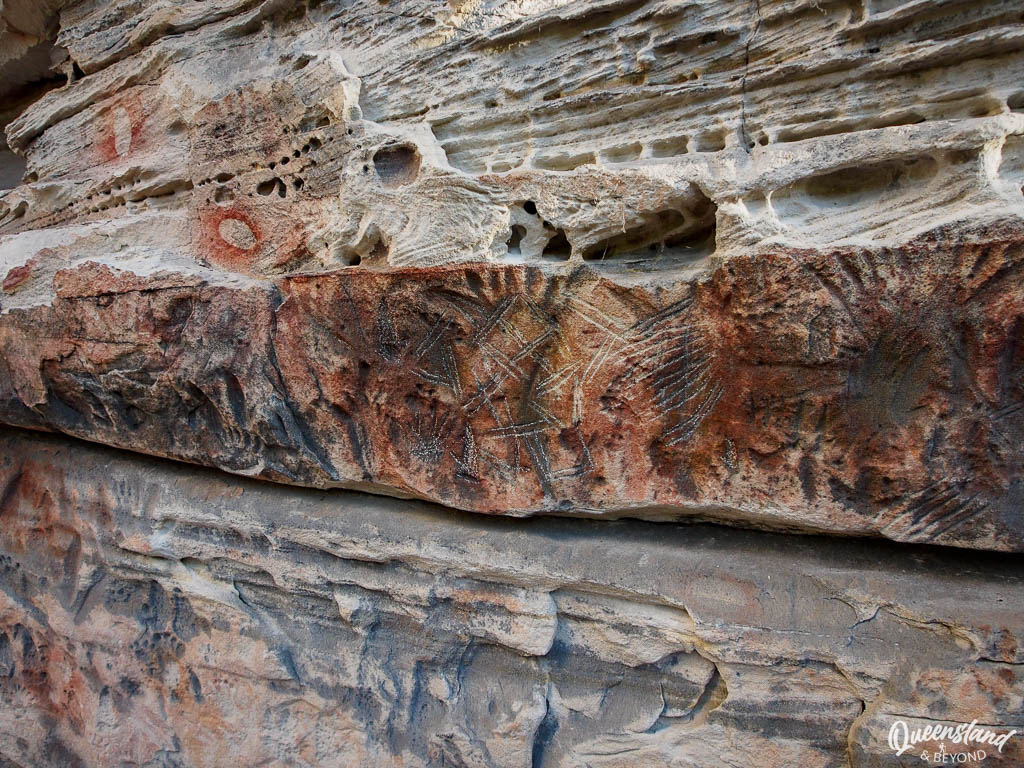
Wind and weather damage rock art naturally. But, unfortunately, many Aboriginal sites have been intentionally desecrated over the years.
Rock art is very fragile so stay on the boardwalk and don’t touch it.
3. MOUNT MOFFATT, CARNARVON NATIONAL PARK
Mount Moffatt is home to the Bidjara and Nuri Aboriginal groups.
This section of Carnarvon National Park is even more remote than Carnarvon Gorge but its Aboriginal sites are imbued with such extraordinary beauty and sacredness that it’s absolutely worth making the long trip.
The area remains of great significance to Aboriginal people, and walking around some of the sites feels very special indeed. The land exudes a sacredness that I’ve felt in few other places (Machu Picchu comes to mind or when we circumnavigated Uluru).
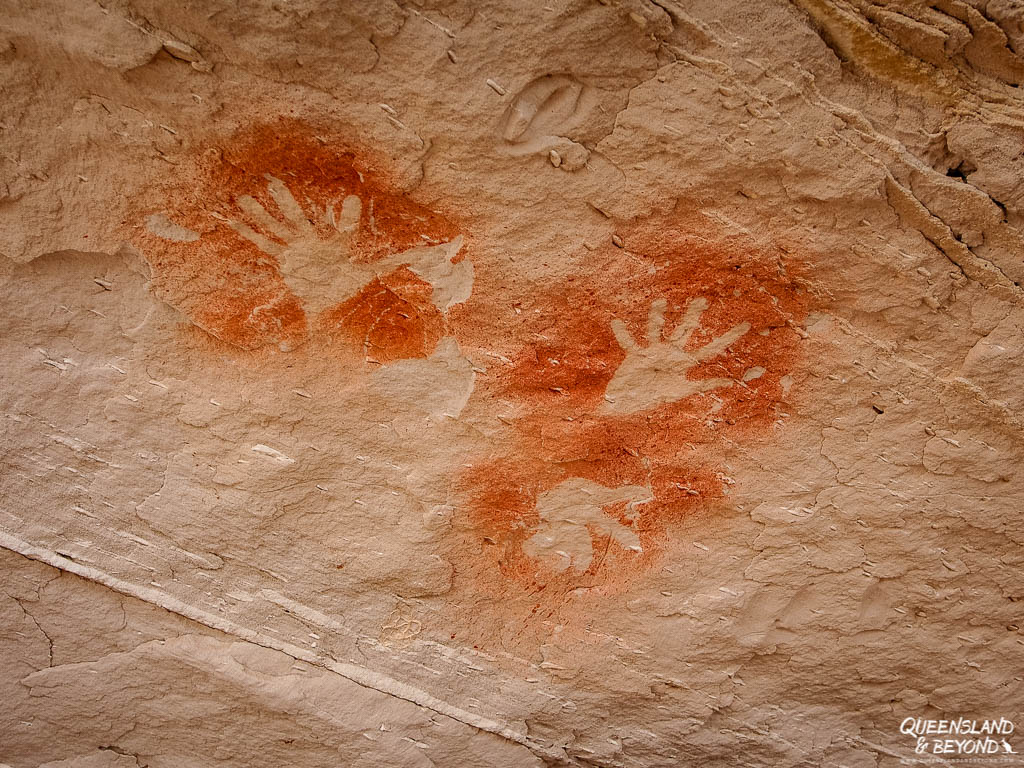
At Mount Moffatt, one of the walking trails takes you through The Tombs, an Aboriginal burial ground that includes a massive sandstone bluff with carved holes used for burials.
As at all indigenous sites, you are asked not to touch the rock. And indeed, the whole area feels so sacred and powerful that I would not have dared.
“This rock was […] a burial site for Aboriginal people, who placed their dead within tunnels in the sandstone. Unfortunately the site has been desecrated – the bark burial cylinders all stolen from the site by the early 1900s.
Interpretative sign at The Tombs, Mount Moffatt

The Tombs also have some 400 stencilled images – weapons, tools, ornaments, hand prints, human feet, kangaroo feet, and even the outline of a human – on a sandstone wall.
These are some of the most vivid I’ve ever seen!
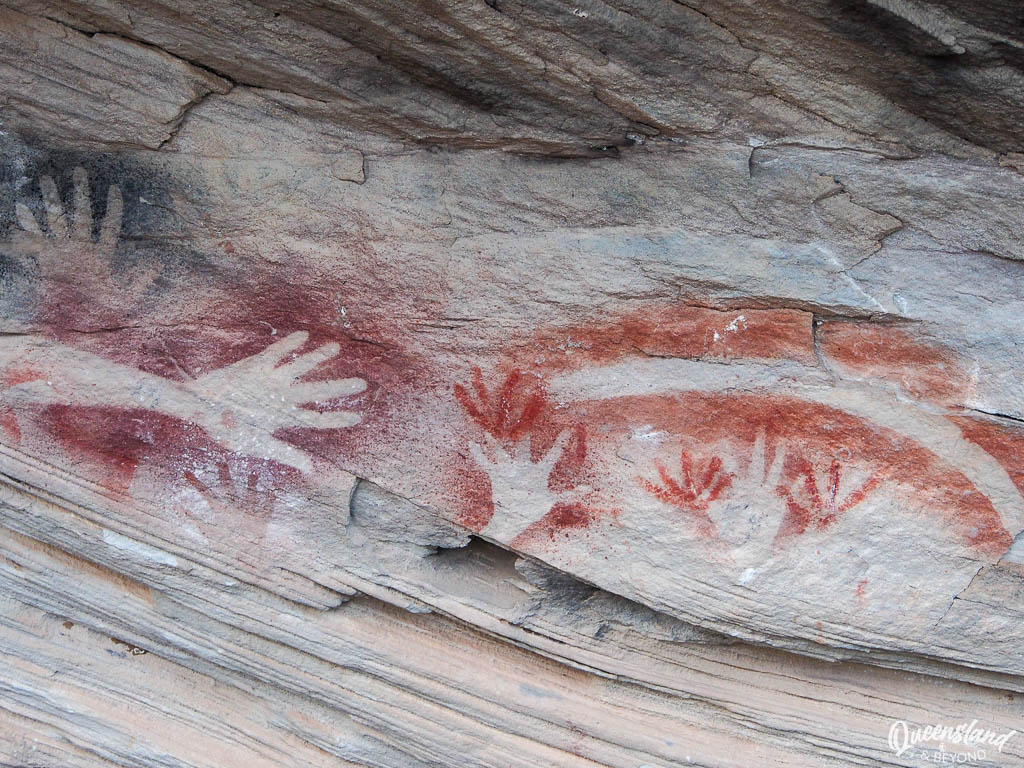

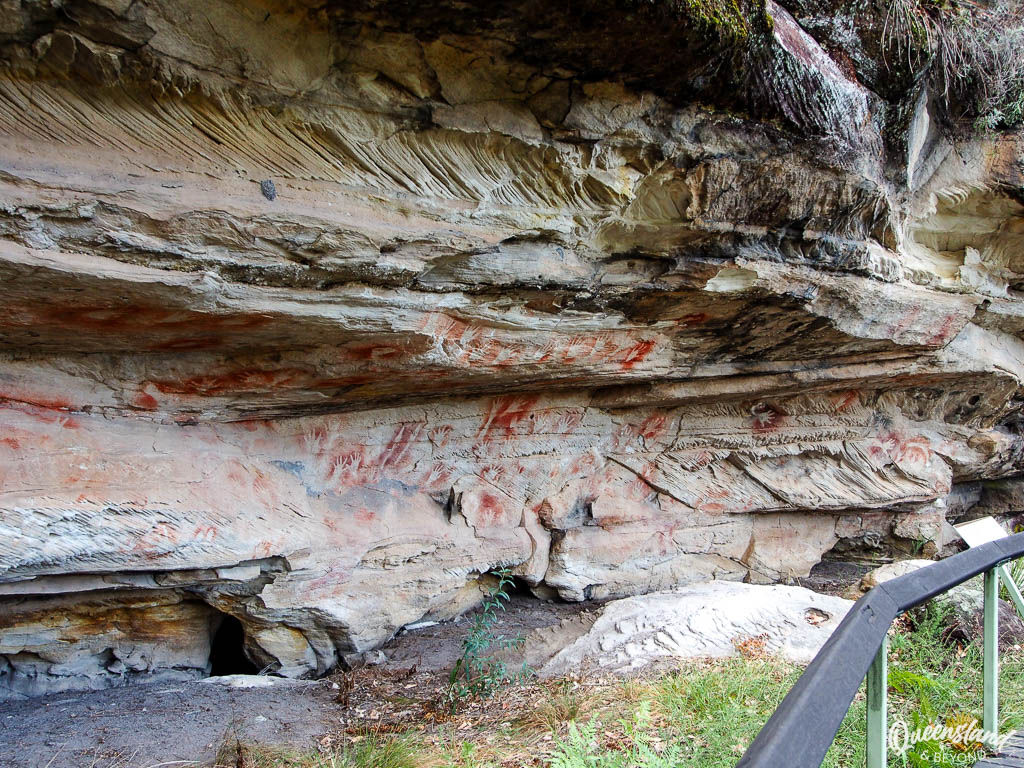



4. BLACKDOWN TABLELAND NATIONAL PARK
Although only a small site, Blackdown Tableland offers another spot to see Aboriginal rock art.
The Ghungula art site remains of significance to the local Aboriginal custodians, and there are a couple of interpretive signs to help you learn more.
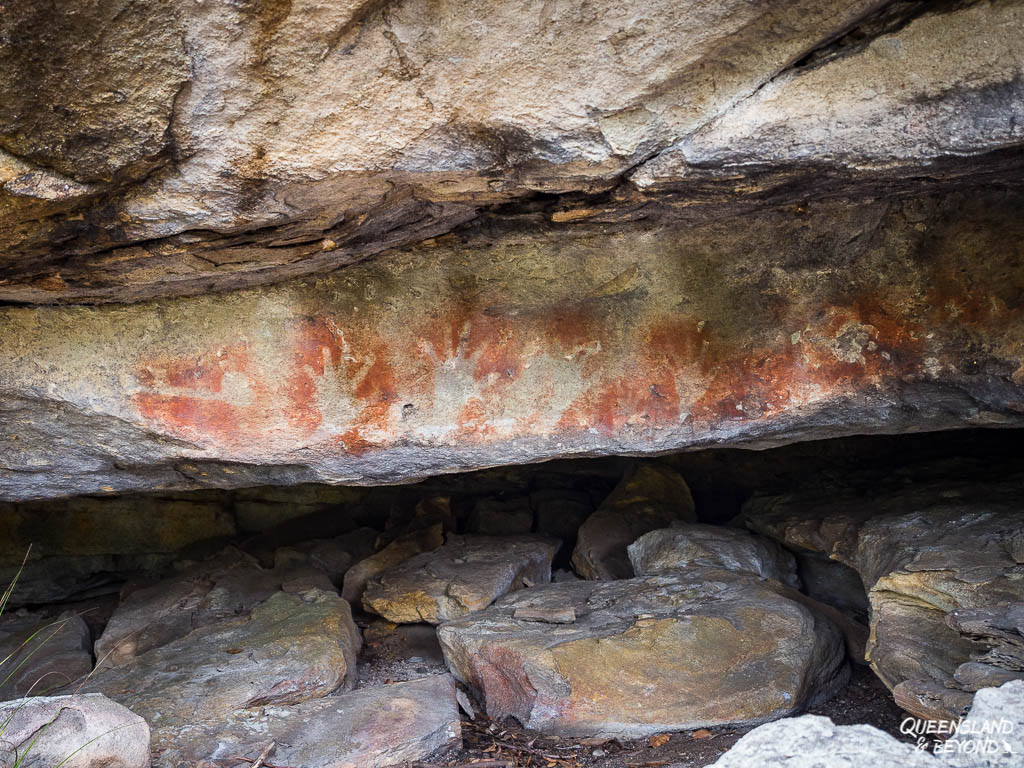
5. RUNGULLA NATIONAL PARK
Rungulla National Park in the Gulf Savannah also has a small, accessible rock art site where you can learn more about the local Ewamian People.
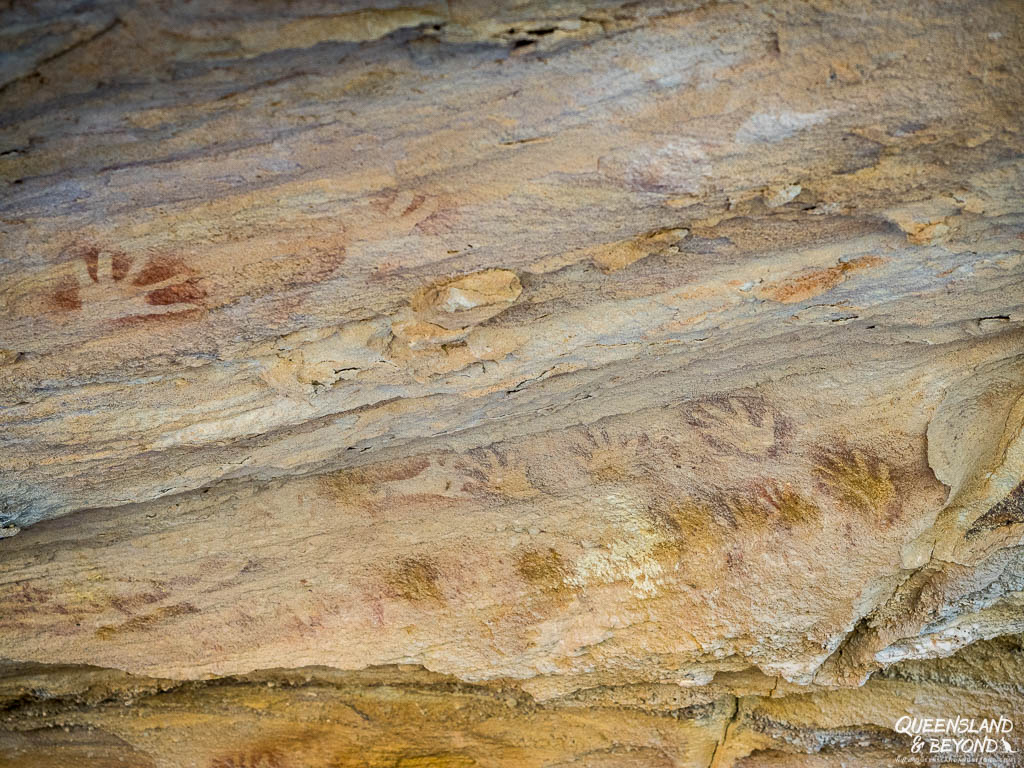
FINAL THOUGHTS
One of the best places for Aboriginal rock art in Queensland is Carnarvon National Park, whether the Mount Moffatt section or Carnarvon Gorge itself.
It’ll require a bit of a road trip out west but it’s worth it.
You can get to the Carnarvon Gorge section by conventional vehicle but if you want to explore the Mount Moffatt area, you will need a high-clearance 4WD, a good map and be keen on roughing things a bit more (camping + drop toilets only).
We’ve also seen some magnificent examples of Aboriginal rock art in the Northern Territory. Kakadu National Park was simply spectacular, even without a 4WD. 🙂
If you’re interested in finding out more about Aboriginal culture and rock art specifically, here are some good starting points:
- Australian Indigenous culture and history, Australian Institute of Aboriginal and Torres Strait Islander Studies
- Indigenous Australians, Australian Museum (comprehensive site)
- Aboriginal culture, Creative Spirits
If you’ve got any recommendations for rock art sites or find Aboriginal Australia interesting, please share. I’d love to know!
Happy exploring,

SAVE TO PINTEREST



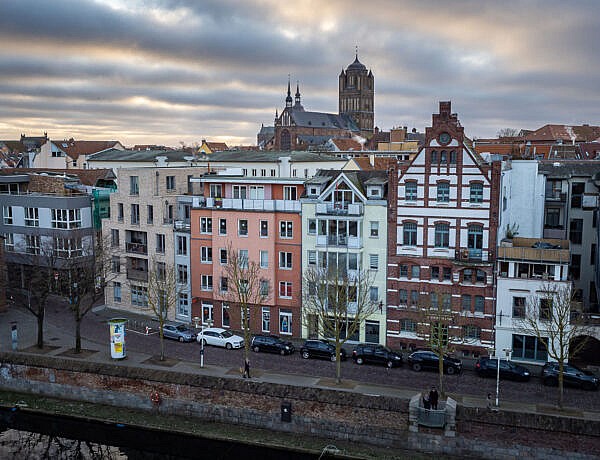
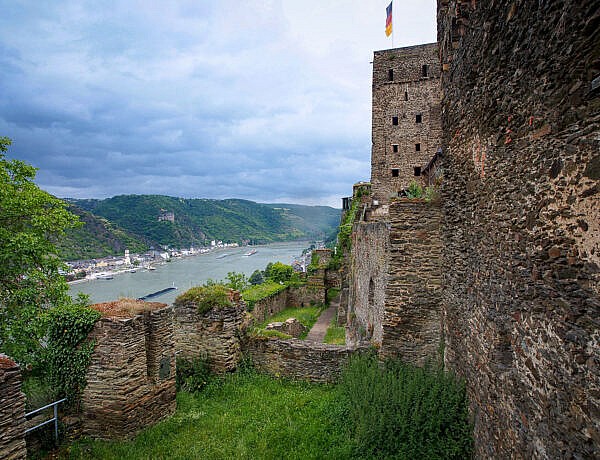
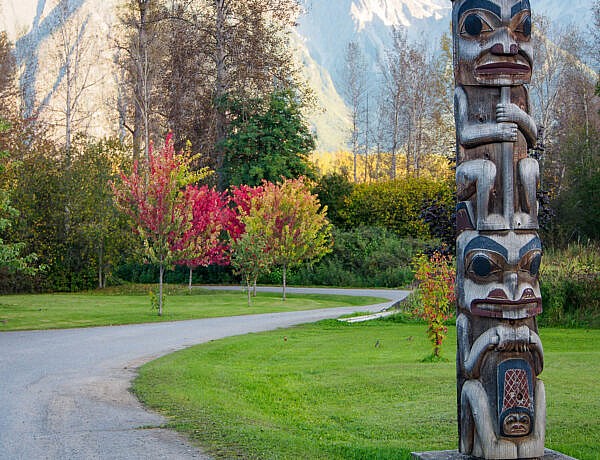

8 Comments
LC
5 April 2017 at 4:43 PMThis reminded me of a tour I did at Uluru, where our guide told us that past guides in the 60s used to throw WATER ON THE CAVE ART in order to make them brighter for the tourists visiting the area (and thus destroying them in the process). The stupidity of it baffles the mind – honestly. Was interested to hear that you felt a certain vibe to some of those sacred sites too. Equal parts awesome and chilling.
Kati
6 April 2017 at 4:48 PMWhat?! Seriously?!? I can only shake my head, I don’t even know what to say about that. (Though I guess, we’re probably doing a lot of stupid things right now that people in the future will just shake their heads at…)
Yes, mostly definitely felt that the burial ground at Mount Moffat was sacred. I didn’t even want to talk out loud, I think I only whispered. Plus we were the only people there so that added to the remote and ancient vibe.
chewytravels
2 May 2017 at 1:11 AMWhen I was in Australia for a conference and sporting events, I found that the acknowledgement of the aboriginal peoples to be very refreshing. Coming from the States where this kind of thing is not even thought about, it’s great to see how Australia at least tries.
That’s interesting that they have video monitoring in some places! I hope that it is helping with the problem, but sounds like a burden that shouldn’t even be needed. :-\
Kati
2 May 2017 at 8:40 AMYes, true, I can’t say that I think of the US as a prime example of acknowledging traditional people. 🙂 It really stood out to me when we visited Canada last year, they seem to have just as much of a troubled history in this regard and it got me thinking about Australia as well.
Yeah, shame about the video monitoring but I guess I much prefer that than people destroying rock art. Agree, shouldn’t be needed…
Wally Trew
24 September 2019 at 12:17 PMHere in Wester Victoria there a many sights of interest but when my son took me to Kings canyon & Uluru it blew my mind. In tune to the spiritual aspects I was stuck with intenseintense & also elation. In a number of places with a deep sense of respect for the surrounds. If all could relax & soak in the atmosphere instead of ticking off as many of their bucket list – we would have have far less vandalism. I love our Indigenous / Aboriginal peoples and their song lines.
Kati
25 September 2019 at 4:36 PMHi Wally,
Yes, the rock art found in the NT is incredible, I agree! I felt similarly moved when we went to Uluru two years ago, it certainly leaves you with a deep sense of the connection to the land, doesn’t it? Kakadu National Park also has some exquisite rock art examples of barramundi and turtles.
Yes, it’s sad to see so much vandalism and this insane wish to climb Uluru this year. I think we often forget why we actually explore places, and just want to tick them off, as you say.
Thanks for commenting! 🙂
Ian
11 April 2021 at 8:11 AMHi, Big Foot is the result of natural iron/mineral staining where water in the past once seeped into a wide crack in the rock, which later in time broke away to expose the stain, coincidentally in the shape of a huge footprint. However it was recognized by the original inhabitants who must have viewed it as something special and sacred as it accompanies nearby artwork too. See this online article about it from UQ Library. https://espace.library.uq.edu.au/view/UQ:12374/westcott_etal_1999b.pdf
Kati
12 March 2025 at 12:19 PMThanks so much for including the link to the paper, Ian! Interesting that it’s probably not rock art per se but still a special site for toolmaking perhaps.